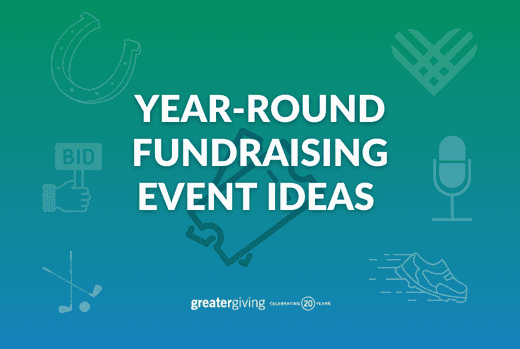Top Nonprofit Fundraising Ideas: Cutting-edge Methods to Increase Even More Funds
Top Nonprofit Fundraising Ideas: Cutting-edge Methods to Increase Even More Funds
Blog Article
The Function of Area Interaction in Nonprofit Fundraising: Structure Lasting Relationships for Lasting Support
Community engagement is significantly recognized as a vital element of effective nonprofit fundraising. By fostering real relationships with neighborhood stakeholders, organizations can cultivate count on and commitment, which are vital for lasting assistance. However, the strategies and approaches employed to engage communities vary extensively, elevating vital inquiries concerning effectiveness and impact. What are the very best methods for growing these important connections, and how can nonprofits measure their success in this field? Comprehending these characteristics can substantially affect the future of fundraising initiatives and the total mission of nonprofit organizations.
Comprehending Area Involvement
Area involvement is a crucial part of effective nonprofit fundraising initiatives. It refers to the approaches and activities that companies employ to get in touch with their regional communities, fostering partnerships that are mutually valuable. Comprehending area engagement entails acknowledging its multifaceted nature, that includes outreach, collaboration, and involvement. Nonprofits need to identify essential stakeholders-- such as area participants, local businesses, and other companies-- to create effective engagement methods.
Reliable neighborhood interaction is predicated on energetic listening and responsiveness to the needs and passions of the area. This procedure entails soliciting responses, comprehending area characteristics, and ensuring that the company's goal lines up with local concerns. Involving the community can take different kinds, including public meetings, volunteer opportunities, and partnership campaigns, each developed to encourage participation and financial investment in the organization's goals.
Furthermore, neighborhood involvement need to be approached as a recurring dialogue instead than an one-time effort. By promoting an inclusive atmosphere where neighborhood voices are heard and valued, nonprofits can develop a strong foundation for future fundraising ventures. Eventually, a deep understanding of community engagement empowers organizations to develop authentic connections that boost their general performance and sustainability.
Advantages of Solid Relationships
Strong relationships created with neighborhood engagement yield numerous benefits for not-for-profit fundraising initiatives. Firstly, these partnerships foster count on and trustworthiness, important parts in motivating contributors to add. When possible supporters see a nonprofit proactively associated with their community, they are more probable to rely on its mission and effect.

Additionally, these relationships help with reliable communication. Nonprofits can take advantage of their links to share stories of effect, updates, and requires, guaranteeing that fans remain educated and involved. This open line of interaction not only enhances bonds yet also motivates referral promo, increasing the nonprofit's reach.
Finally, solid area connections can attract new companions and enrollers. Organizations and individuals are extra likely to align with organizations that demonstrate significant neighborhood participation, giving added sources and assistance that can considerably improve fundraising abilities. Thus, growing durable connections with neighborhood involvement is integral to a not-for-profit's long-term fundraising success.
Methods for Effective Involvement
How can nonprofits effectively involve their neighborhoods to enhance fundraising initiatives? Developing targeted approaches is necessary for promoting purposeful connections. Initially, leveraging social networks systems allows companies to share their objective dynamically and interactively, getting to a broader target market. Normal updates, engaging web helpful hints content, and calls-to-action can galvanize community rate of interest and participation.
2nd, organizing neighborhood occasions, such as workshops, volunteer possibilities, or fundraising drives, helps with in person communication, allowing nonprofits to showcase their effect and initiatives. These occasions not only raise funds however additionally grow relationships and allow neighborhood participants to involve directly with the cause.
Third, carrying out individualized communication techniques can enhance involvement. Customizing messages to specific donor sections based on rate of interests and previous contributions cultivates a sense of belonging and investment in the organization's mission.
Finally, producing partnerships with regional organizations and area leaders can amplify outreach efforts. Collaborative campaigns can boost presence and trustworthiness, showing a cumulative commitment to the community's well-being. By integrating these strategies, nonprofits can construct long-term partnerships that improve fundraising efforts and drive sustainable support.
Gauging Involvement Success
While involving the neighborhood is important for successful nonprofit fundraising, gauging the performance of these interaction efforts is equally vital. Developing clear metrics allows organizations to assess just how well they are attaching with their target market and accomplishing their fundraising goals. Key efficiency signs (KPIs) such as donor retention prices, volunteer engagement degrees, and interaction on social media systems offer tangible data for assessment.

Regularly assessing these metrics makes it possible for organizations to pivot their strategies when essential, making certain that area interaction remains straightened with their overall goal. Moreover, sharing these results with stakeholders cultivates transparency and constructs count on, urging additional community participation. Ultimately, a durable measurement framework not just notifies future fundraising campaigns however additionally enhances the partnership between the not-for-profit and its supporters, laying the foundation for sustainable success.
Study in Neighborhood Influence
Various instance studies highlight the extensive impact that neighborhood engagement can have on not-for-profit fundraising success. One notable example is the "Food for Idea" initiative, where a regional food financial institution partnered with organizations and schools to host neighborhood dinners. These occasions not just raised funds but likewise cultivated a feeling of belonging amongst participants, considerably raising benefactor retention rates.
Another compelling situation is the "Eco-friendly Spaces Task," which entailed neighborhood homeowners in the revitalization of urban parks. This initiative not only gathered monetary assistance from regional services yet additionally grew a volunteer base that added to recurring upkeep and shows. The feeling of ownership and pride among neighborhood members translated into sustained payments.
In the world of arts, the read this "Art for All" project efficiently engaged regional artists and patrons to produce collective art setups, causing boosted exposure and donations for a local arts not-for-profit.
These instances highlight that when nonprofits prioritize neighborhood involvement, they can create lasting relationships that boost fundraising initiatives, making sure sustainable assistance and cultivating a lively community culture. Such instances demonstrate that community involvement is not simply a technique yet an essential column of nonprofit success.
Conclusion
In conclusion, neighborhood interaction is indispensable to the success of nonprofit fundraising efforts. Eventually, a durable structure of area support not only enhances fundraising prospective yet additionally cultivates a culture of collaboration, necessary for attaining lasting business objectives and maintaining purposeful influence. fundraising consultant.
Nonprofits must identify essential stakeholders-- such as neighborhood members, regional companies, and other organizations-- to produce efficient interaction techniques.

In final thought, neighborhood engagement is essential to the success of nonprofit fundraising efforts.
Report this page